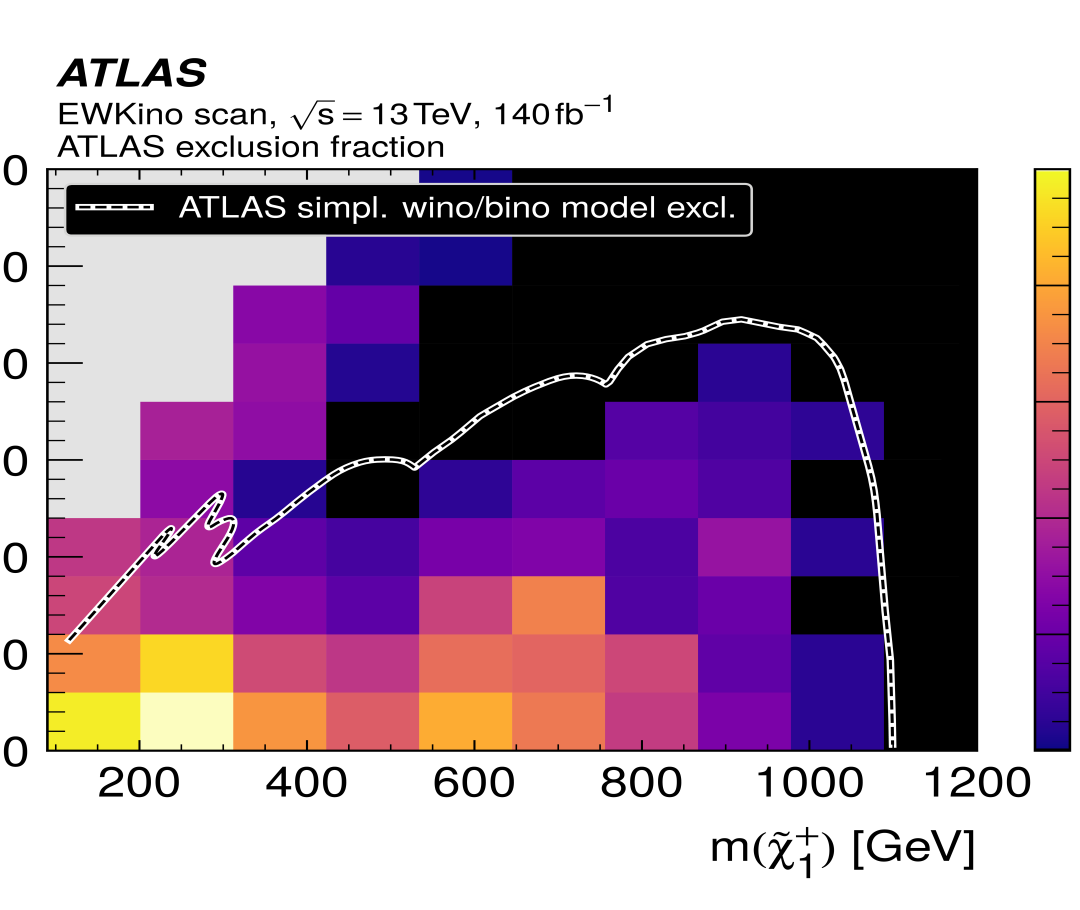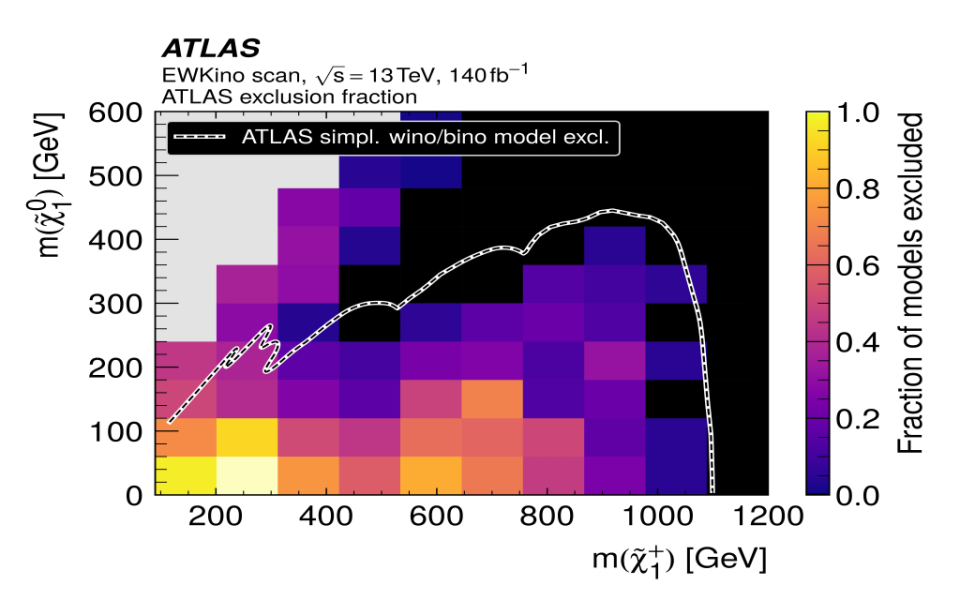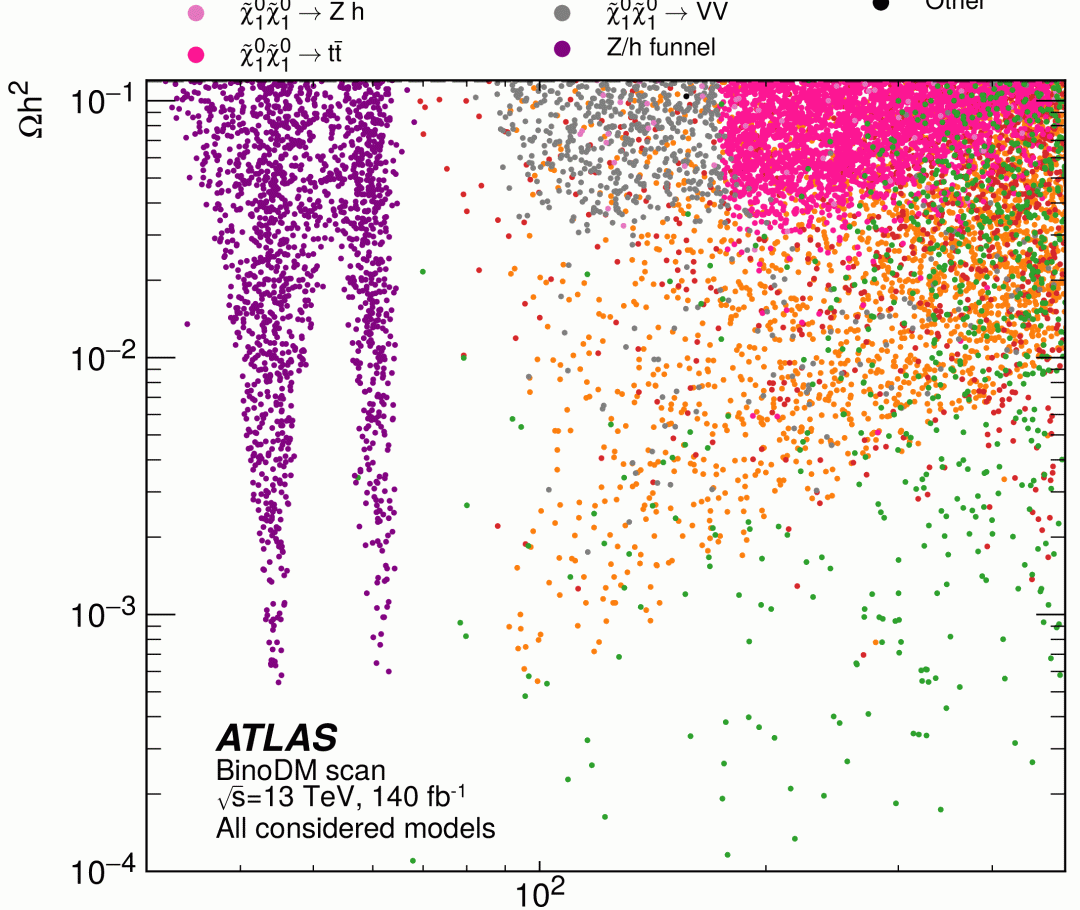
This latest study focuses on the supersymmetric partners of the “weak” nuclear and electromagnetic force-carriers and the Higgs boson. These “weakly-interacting” supersymmetric particles would leave particularly subtle traces in the LHC dataset, making them challenging to observe. However, the lightest of them could be the source of the mysterious ‘dark matter’ which astrophysicists believe makes up 25% of the contents of the universe.


